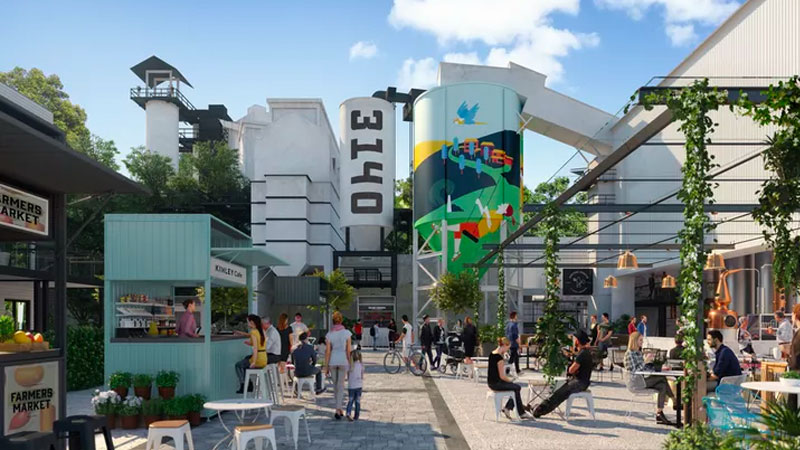How the Suburbs Can Evolve From Covid-19
As Australia’s population has grown, new house and land developments have expanded the suburbs. Sadly, there’s been little to applaud.
Numerous failures, structurally and socially, have attracted criticism and damaged suburbia’s image.
Post-Covid-19, attention will swing back to these vital components of our cities. The suburbs need and deserve our attention. Post-pandemic, for reasons of space, perceived safety and wellbeing, we’ll see greater interest in the suburbs.
Never before have our homes been such places of refuge and, because of this, people will be willing to invest more money, time and effort into making them as safe and comfortable as possible.
This, combined with the fact that new generations are looking for amenity-rich, walkable neighbourhoods, not to mention the idea that telecommuting may untether many workers from the CBDs, means residential developers can now create socially and economically successful suburbs where people actually choose to be.
In Sydney, 30 per cent of households live in apartments. No longer the domain of singles and couples, the family flat is becoming more ubiquitous.
One reason is that people, especially millennials, want to ditch the car but still access cultural, recreational, educational and retail amenities with ease.
The inner-city shouldn’t be our only choice if we want to enjoy these things. By reframing and repositioning our suburbs we can make them more enticing and liveable, exploiting the many advantages they offer residents from all walks of life.
Unfortunately, in Australia we have a “people last paradigm”. Sites are acquired, masterplans designed and planning permits lodged all before the end-user is identified. We need a people-first mindset. A vague description of “young families” won’t cut it.
Suburban transformation demands more amenity, urbanity and fine grain. The fringes can attract a growing urban market by providing vibrant, convenient, sophisticated living synonymous with the inner city.
Basic expectations must be met: the local coffee shop that doubles as the office, workplaces you can cycle to, somewhere for lunchtime workouts, and the holy grail—restaurants and bars that open late.
Such places create that longed-for blurring of boundaries between work and leisure. Time can be better utilised and a new sense of connection forged with one’s neighbourhood and broader local community. These human experiences enrich our lives and should thrive in our suburbs.
Of course new homes are useless without convenient employment and transport options. These things must be considered upfront.

At Ellenbrook in WA a bus service was available from day one, and it had the highest patronage of bus transit of any outer metropolitan area around Perth.
For 20 years Ellenbrook has consistently remained one of Australia’s fastest-selling residential estates.
At Kinley in Victoria the earliest plans include a train station. We need more examples like this to celebrate.
We also need to look at the trend towards new residential development clustered around synergistic industries and organisations to provide employment. At Babcock Ranch in Florida, a community with a focus on walkability and sustainability, the aim is to become America’s first solar-powered city and reap the associated benefits.
In the Victorian regional city of Geelong, a place with strong residential growth, a lot of work is being done to create a “knowledge economy” linked to Deakin University’s Waurn Ponds Campus.
The site’s development as the Geelong Future Economy Precinct will attract valuable investment, providing local jobs.
Supporting and promoting entrepreneurship in the suburban fringe is also key. It’s time to empower communities to create jobs themselves.
Developers must factor this into their visions. Local co-working spaces are no longer “nice to have” accessories, they are vital facilitators that help communities thrive.
Annual events like the WYNnovation Festival, an initiative delivered by Wyndham City Council in Victoria, help promote and enable innovation and entrepreneurship. Initiatives like these drive long-term change.
The obvious expectations for our suburbs include convenience, lifestyle, diversity of experiences, housing choice and affordability, low maintenance options, genuine sustainability initiatives, outdoor amenity and highly walkable communities with village-style enclaves, wider footpaths and cycle-ways and less overall need for cars.
It all sounds obvious yet is very rarely done.

The growing popularity of nature-based play means playgrounds are becoming a key feature in master planned developments. Say goodbye to the token swing and see-saw.
Assets like these are major community anchors that, with the right level of design and investment, can be leveraged as marketable differentiators.
At the community of Woodlea in Victoria, by Mirvac and VIP, the developers installed an incredible adventure park on site before the first residents arrived, along with a café run by a well-known inner city crew.
They also created “Flavourfest”, an annual barbecue festival that is now a district favourite.
Additionally, Bacchus Marsh Grammar school established a campus on-site. Launched in March 2015, Woodlea now has 5,000 residents and has been one of Victoria’s fastest selling and most successful new communities.
As the world rapidly changes, ideas like agrihoods which until recently seemed too left of field for many, are appealing to a more mainstream audience.
Projects like Serenbe near Atlanta, Georgia, focus on sustainability, community and farm-to-table produce, a model that enhances project marketability and returns by creating compelling destinations for people to dine, buy products directly from local growers, or even grow their own produce in community gardens.
The suburbs should also support and encourage a demographic melting pot. There are more people alive today over 65 than under five. Masterplanned communities can no longer be targeted solely at young families with kids. It’s a simplistic view which doesn’t stack up.
Successful places become magnetic destinations. A place where people are proud to live is a place that attracts talent and investment, that performs better economically and socially and is a place where residential and commercial property developments outperform.
When it comes to our suburbs, Australia should be leading the world.
About the author
Andrew is the founding principal of Hoyne. Andrew has worked in the property sector for the last 25 years, helping major Australian and international developers and councils create recognisable landmarks across Australia.
The Urban Developer is proud to partner with Hoyne to deliver this article to you. In doing so, we can continue to publish our free daily news, information, insights and opinion to you, our valued readers.














